Why Do We Age
Life, in its elemental form, is a series of continuous biochemical reactions that enable us to function. As we grow older, these biochemical reactions change, which leads to the physical and mental alterations that define the aging process. Aging is an inevitable part of life; a complex, multifaceted process influenced by a variety of factors, from genetics to environmental conditions. While aging is often associated with decline, it also brings about growth, wisdom, and a deeper understanding of life. This intricate dance between growth and decline, birth and death, forms the essence of why we grow old and die.
The Age Paradox
The Age Paradox revolves around the conflict between our chronological and biological ages. In essence, the number of years we have lived does not always align with the "age" of our bodies. Our genes, lifestyles, and environments can speed up or slow down the biological clock, making us appear older or younger than we actually are. This discordance sparks the question: "Why do we age?" and forms the basis of the ongoing quest for healthy aging.
Decoding Chronological Age
Chronological age, quite simply, is the number of years a person has lived. It's a linear measure of time, starting from the moment of birth. The meaning of chronological age, however, extends beyond a simple count of years. It’s a universally acknowledged metric that, rightly or wrongly, plays a significant role in society's perception of us, and shapes many aspects of our lives from education, employment, and retirement to healthcare
Biological Age
Biological age, on the other hand, is a dynamic concept. It represents the condition of an individual’s body at a cellular level and how well it is functioning compared to the average functionality at a given chronological age. In other words, it's a measure of how quickly the cells in your body are aging.
For instance, if you're 40 years old but lead a healthy lifestyle with regular exercise, a balanced diet, stress management, and sufficient sleep, your biological age might be younger than your chronological age. Conversely, if you're 40 but have spent two decades smoking heavily, eating unhealthy food, and living a sedentary lifestyle, your biological age may be much older than your chronological age.
How is Biological Age Determined?
There are several ways to estimate biological age. Many methods revolve around biomarkers or observable characteristics that can indicate biological states, such as:
Telomere Length:
Telomeres are the protective caps on the ends of chromosomes, which shorten as cells replicate. When they become too short, the cell can no longer replicate and becomes senescent or dies.
Epigenetic Clock:
This is based on chemical changes to an organism's DNA. These changes, known as methylation, can increase or decrease with age.
Metabolic Markers:
Various metabolic markers, such as blood pressure, cholesterol levels, blood sugar levels, etc., can also provide insight into a person's biological age.
Physiological and Functional Parameters:
These include parameters like muscle strength, lung capacity, and visual and auditory acuity.
Biological Age vs. Chronological Age
While chronological age is a straightforward calculation, biological age represents how old a person seems. This can be influenced by a range of factors, from genetics and diet, to exercise and stress levels. Understanding the difference between chronological and biological age is vital as it affects our healthspan – the period of life spent in good health, free from the chronic diseases and disabilities of aging.
Why Does the Difference Matter?
The gap between chronological and biological age is significant because it can indicate overall health and predict lifespan. Studies have shown that a higher biological age, irrespective of chronological age, is associated with an increased risk of disease and mortality. This makes biological age a potentially powerful tool in preventative health measures.
Factors Influencing the Disparity Between Chronological and Biological Age:
Several factors influence the disparity between chronological and biological age.
DNA methylation:
It is a biological process that adds a methyl group (CH3) to the DNA molecule. This can change how genes are expressed, or turned on or off. DNA methylation is thought to play a role in aging, as it can accumulate over time and lead to changes in gene expression.
The study you linked found that there was a significant correlation between DNA methylation age and chronological age. However, there was also a significant amount of variation in DNA methylation age, even among people of the same chronological age. This suggests that DNA methylation may be one of the factors that contributes to the disparity between chronological and biological age.
There are a number of factors that can influence DNA methylation, including environmental factors, lifestyle choices, and genetics. Environmental factors such as exposure to toxins and pollutants can damage DNA and lead to increased methylation. Lifestyle choices such as smoking and obesity can also increase methylation. Genetics can also play a role in determining how much methylation a person has.
The study you linked found that DNA methylation age was a significant predictor of all-cause mortality. This suggests that DNA methylation may be a useful biomarker for assessing a person's risk of death. Future research is needed to better understand the role of DNA methylation in aging and to develop interventions that can help to reduce methylation and improve health.
Rate of Senescence
The rate of senescence is the rate at which cells and tissues in the body decline in function over time. It is a complex process that is influenced by a variety of factors, including genetics, lifestyle, and environment.
The rate of senescence is not uniform across all tissues and organs. Some tissues, such as the skin and the brain, show signs of aging earlier than others. The rate of senescence also varies from person to person. Some people appear to age more than others.
There are a number of factors that can influence the rate of senescence. These include:
- Genetics: Some people are genetically more prone to age at a faster rate than others.
- Lifestyle: Smoking, excessive alcohol consumption, and a poor diet can all accelerate the rate of senescence.
- Environment: Exposure to environmental toxins, such as air pollution and radiation, can also increase the rate of senescence.
The rate of senescence can be slowed down by adopting a healthy lifestyle and by avoiding exposure to environmental toxins. There are also a number of experimental treatments that are being investigated for their potential to slow down or even reverse the process of senescence.
The senescent cells are considered 'zombie cells’. There some supplements which can also be helpful to removes zombie cells in tissues, reduces senescence burden and promotes healthy cellular function. SeneVit is a senolytic supplement that helps to remove senescent cells from the body. Senescent cells are old, damaged cells that can cause inflammation and other health problems. SeneVit contains a blend of natural ingredients that have been shown to kill senescent cells without harming healthy cells. By removing senescent cells, SeneVit can help to improve overall health and well-being.
Mental Health: mental health can have a significant impact on biological age. Mental health conditions such as depression, anxiety, and stress can lead to changes in the body that accelerate the aging process. For example, chronic stress can lead to inflammation, which can damage cells and tissues. This can lead to a decline in physical and cognitive function, and can make people appear and feel older than they actually are.
Mental health can influence the aging process through lifestyle factors. People with mental health conditions are more likely to engage in unhealthy behaviors such as smoking, drinking, and poor diet. These behaviors can also accelerate the aging process.
Here are some specific examples of how mental health can influence the disparity between chronological and biological age:
Depression: People with depression are more likely to have a higher resting heart rate, which can increase the risk of heart disease and other health problems. They are also more likely to have sleep problems, which can lead to fatigue and difficulty concentrating.
Anxiety: People with anxiety are more likely to have high blood pressure, which can increase the risk of heart disease and stroke. They are also more likely to have muscle tension, headaches, and stomach problems.
Stress: Chronic stress can lead to a decline in the immune system, which can make people more susceptible to illness. It can also lead to changes in the brain that can impair memory and cognitive function.
Healthy Living Strategies to Enhance Health Span
To enhance health span, it's important to maintain a balanced diet, stay physically active, and manage stress. Regular health check-ups can detect potential health issues early. Supplements, such as Healthspan Omega 3 and other Healthspan supplements, can also support overall health. In essence, healthy living is a lifelong commitment that can significantly improve our quality of life as we age.
In conclusion, aging is an intricate process that, despite its inevitability, can be approached proactively. By understanding our bodies, making informed lifestyle choices, and embracing the journey, we can navigate the waters of aging with grace and vitality. Remember, in the quest for healthy aging, it's not just about adding years to life but more importantly, life to years.
References:
1) https://www.ahajournals.org/doi/full/10.1161/01.HYP.37.2.3812) https://www.ncbi.nlm.nih.gov/pmc/articles/PMC8284182/#:~:text=Biological%20age%20is%20the%20concept,methods%20of%20measuring%20biological%20age.
3) https://genomebiology.biomedcentral.com/articles/10.1186/s13059-015-0584-6
4) https://academic.oup.com/biomedgerontology/article/68/6/667/873700


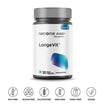
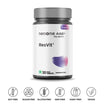
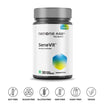

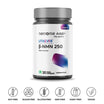
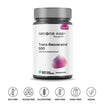
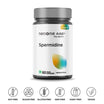
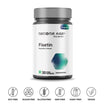

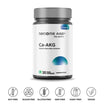
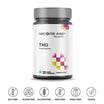
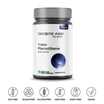
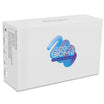

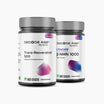
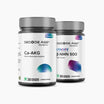

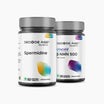
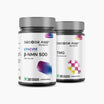

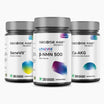
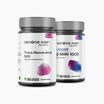
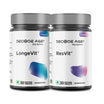
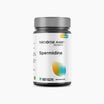
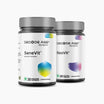


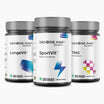



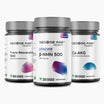

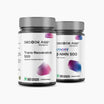



Leave a comment
This site is protected by reCAPTCHA and the Google Privacy Policy and Terms of Service apply.